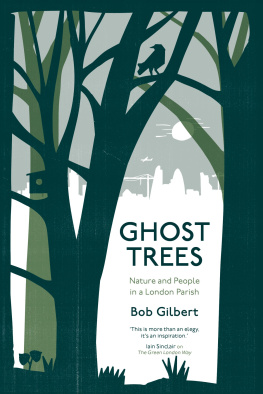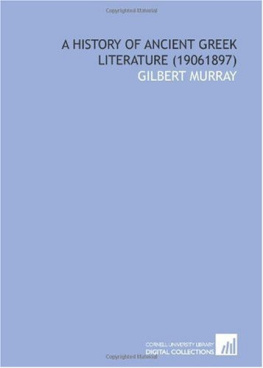Gilbert White - The Natural History of Selborne
Here you can read online Gilbert White - The Natural History of Selborne full text of the book (entire story) in english for free. Download pdf and epub, get meaning, cover and reviews about this ebook. year: 2013, publisher: Oxford University Press, genre: Art. Description of the work, (preface) as well as reviews are available. Best literature library LitArk.com created for fans of good reading and offers a wide selection of genres:
Romance novel
Science fiction
Adventure
Detective
Science
History
Home and family
Prose
Art
Politics
Computer
Non-fiction
Religion
Business
Children
Humor
Choose a favorite category and find really read worthwhile books. Enjoy immersion in the world of imagination, feel the emotions of the characters or learn something new for yourself, make an fascinating discovery.

- Book:The Natural History of Selborne
- Author:
- Publisher:Oxford University Press
- Genre:
- Year:2013
- Rating:3 / 5
- Favourites:Add to favourites
- Your mark:
- 60
- 1
- 2
- 3
- 4
- 5
The Natural History of Selborne: summary, description and annotation
We offer to read an annotation, description, summary or preface (depends on what the author of the book "The Natural History of Selborne" wrote himself). If you haven't found the necessary information about the book — write in the comments, we will try to find it.
The Natural History of Selborne — read online for free the complete book (whole text) full work
Below is the text of the book, divided by pages. System saving the place of the last page read, allows you to conveniently read the book "The Natural History of Selborne" online for free, without having to search again every time where you left off. Put a bookmark, and you can go to the page where you finished reading at any time.
Font size:
Interval:
Bookmark:
The Natural Hi ory of Selborne
ory of Selborne
GILBERT WHITE
 ory of Selborne
ory of Selborne
Edited by
ANNE SECORD


Great Clarendon Street, Oxford OX 2 6 DP
United Kingdom
Oxford University Press is a department of the University of Oxford.
It furthers the Universitys objective of excellence in research, scholarship,
and education by publishing worldwide. Oxford is a registered trade mark of
Oxford University Press in the UK and in certain other countries
Editorial material Anne Secord 2013
Additional copyright information appears on
The moral rights of the author have been asserted
First published 2013
Impression: 1
All rights reserved. No part of this publication may be reproduced, stored in a retrieval system, or transmitted, in any form or by any means, without the prior permission in writing of Oxford University Press, or as expressly permitted by law, by licence or under terms agreed with the appropriate reprographics rights organization. Enquiries concerning reproduction outside the scope of the above should be sent to the Rights Department, Oxford University Press, at the address above
You must not circulate this work in any other form
and you must impose this same condition on any acquirer
British Library Cataloguing in Publication Data
Data available
ISBN 9780199591961
Printed by
Clays Ltd, St Ives plc
Links to third party websites are provided by Oxford in good faith and
for information only. Oxford disclaims any responsibility for the materials
contained in any third party website referenced in this work.
Unless otherwise indicated, all illustrations are taken from Thomas Pennants British Zoology, 2nd edn., iv (1770), courtesy of the Bodleian Libraries, the University of Oxford (8 P. 16. Linc).
(plate ciii)
(plate ci)
(plate lxiii)
(plate xlvii)
(plate cii)
(plate vi)
(Thomas Pennant, Arctic Zoology (17845), i, plate viii. Courtesy of Cambridge University Library)
(plate c)
(plate ciii)
(plate lxxi)
(plate lv)
(plate lviii)
(plate xiv)
(plate lxi)
(plate ix)
(plate xix)
(plate lxxvi)
The Natural History of Selborne is so established a classic that it is hard to take seriously its authors fears that as tastes changed the book might quickly sink into oblivion. Instead, the work has never lost its ability to attract new readers. Over the past two and a quarter centuries, editors and readers have been responsible not only for keeping the work in print but also for establishing the reputation of its author, the Reverend Gilbert White, as the producer of a new kind of natural history. The significance of Whites book has been recast many times and its originality redefined by later scientific questions, but, paradoxically, the very elements that characterize it as a thoroughly eighteenth-century work have proved to be the essence of its enduring, widespread appeal. The Natural History of Selborne has continued to speak to readers because what it has to say is only a part of its attraction. It is in the manner of its telling that much of the charm of the work lies.
Whites decision to depict the natural history of his own parish in a series of letters addressed to the naturalists Thomas Pennant and Daines Barrington has proved essential to its longevity. Employing the sense of immediacy that letters allow, White not only sparks our interest with those anecdotes of animal behaviour he thought so essential to a work of natural history, but also teaches us one of the subtlest of lessons: how to observe. His accounts of natural phenomena and the processes of nature are inseparable from the observational practices most appropriate for their elucidation. No sooner are we invited to gaze upon the heavy and bloated viper basking in the sun than the reptile has been cut open to reveal the live young in her abdomen ().
Whites two series of letters, with their combination of detached analysis and delight in the ordinary occurrences of nature, were carefully compiled to pique and maintain his readers interest, in the hope that this would encourage them to attend to the less gripping issues ).
It is in the light of Whites grand vision of a universal correct natural history that we can understand his concern that the public would laugh at an old country parsons book. During the years that he corresponded with Pennant and Barrington, and while he prepared these letters for publication, White remained unshaken in his conviction that a correct natural history depended upon showing not only that the application of natural knowledge could benefit society but also that social hierarchies, and the authority assumed by the clergy and the gentry, were part of the natural order of things. Gentlemen were qualified to pursue rational inquiries into nature by virtue of their education and their leisurea role that White, an Oxford-educated clergyman from a family deeply embedded in the Anglican church, played out in Selborne, a parish of 12 square miles with 700 inhabitants, in which he lived almost his entire life. Months after Selborne was published, however, the French Revolution and the social unrest it produced in England were the first serious assaults on the authority assumed by the clergy and the upper orders of society. White feared that this political upheaval would disrupt the natural order of thingsthe belief that divine governance, discernible through the investigation of nature, showed how the correct functioning of the whole depended upon the adaptation of the parts. The destruction of such authority would indeed make a book written
White had no need to be as overt as this in Selborne, which was completed before the French Revolution and, as a lavish and expensive work, was addressed an audience he could assume would share his opinion that they alone were qualified to join together to produce a universal natural history. His patrician views of nature, however, are clear from the text itself. Selborne is shaped by his love of the classical authors, of John Miltons poetry, and of physico-theological works. It was the entanglement of these literary and religious resources with Whites acute observation of nature that enabled him to convey feelings of wonder or awe as well as provide a philosophical description of natural phenomena. Selborne is also an expression of cosmopolitanism, and of Whites participation in a scientific culture with global interests, exhibited not least in the number of travel narratives mentioned in the text and by his references to far-flung places, from China to Peru.
Whites own interest in the natural world is itself a parochial history. His early life revolved around Selborne and Oxford, but when his ambition for an academic life came to nought in 1757 with his failure to be elected Provost of Oriel College, and after he inherited The Wakes (the White family home in Selborne) in 1763, he was reluctant to move away from the small village he had known since he was a child. He had already devoted years to making fashionable improvements to the gardens at The Wakes, recording his activities and their results in the Garden Kalendar, which he started in 1751. But it was his duties as a clergyman, combined with his decision to remain in Selborne, that developed and intensified his interest in natural history.
Next pageFont size:
Interval:
Bookmark:
Similar books «The Natural History of Selborne»
Look at similar books to The Natural History of Selborne. We have selected literature similar in name and meaning in the hope of providing readers with more options to find new, interesting, not yet read works.
Discussion, reviews of the book The Natural History of Selborne and just readers' own opinions. Leave your comments, write what you think about the work, its meaning or the main characters. Specify what exactly you liked and what you didn't like, and why you think so.










